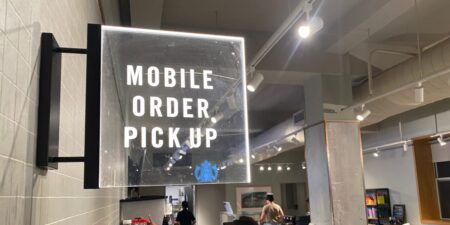- A Duke University professor has won the ACM Prize in Computing for her work with algorithms.
- Amanda Randles creates virtual simulations that incorporate data from patients’ wearable devices.
- Randles is also trying to make medicine more personalized by learning how cancer cells move.
Amanda Randles is shaping the future of medicine with her award-winning research.
Not so long from now, Randles envisions a world where your smartwatch, or similar device, would constantly feed data into a virtual simulation of your entire body, allowing doctors to closely monitor your health on a personalized level, unlike anything we have today.
“The long-term vision is building, essentially, your virtual human, your digital twin,” Randles told Business Insider.
To that end, Randles, a professor of biomedical sciences at Duke University’s Pratt School of Engineering, spends her time building some of those virtual simulations.
In particular, she focuses on simulating blood flow and cell movement throughout the body. Her work recently won her the Association for Computing Machinery’s $250,000 Prize in Computing.
“Her innovative techniques will not only deepen our understanding of diseases but also herald a new era of biomedical simulation,” Salil Parekh, CEO of Infosys, which provides funding for the award, said in a statement.
Putting your Apple Watch data to work
Today’s standard fitness wearables can track a person’s heartbeat during their daily routines. However, if they could also follow changes to blood flow in real-time, then that could help doctors move from “reactive care to the proactive,” Randles said.
In other words, it could help doctors identify signs of potentially fatal conditions like heart disease much sooner, which could lead to better treatment. Heart disease is the leading cause of death in the US, accounting for one in five deaths each year.
While there are privacy concerns, a virtual twin that tracks your health daily would be revolutionary for healthcare. However, one of the hurdles folks like Randles face is data overload.
Since your heart beats 100,000 times a day, that’s an enormous amount of data. Randles and her team are working on figuring out how to take snapshots of moments and apply them to larger scenarios.
If you’re sitting at your computer for a couple of hours every morning for a week, for example, the model might not need to incorporate every second.
Once you have that personalized baseline, “we have to have ways of calibrating when have you gone off the rails and it’s not matching any longer,” Randles said.
The model would be able to pick up if plaque is developing in the heart, for example.
While she’s hopeful that regular wearables will provide good enough data for the model, Randles said some heart disease patients may need medical-grade devices.
These sort of wearable-driven blood maps could be on the horizon, Randles said. “It’s not decades away,” she said. “I think we will see it in the next five to seven years.”
Right now, the circulatory system is just one piece of the whole human body, and Randles is interested in incorporating the brain and other systems into the concept of a virtual twin. That technology is at least a decade away, she said.
In the meantime, Randles’s simulations are already helping doctors in other ways.
A personalized 3D map of your circulatory system
Using Randles’ simulations, doctors can determine when a patient needs a stent to improve blood flow in their heart in a noninvasive way. The traditional method is to insert a guide wire into the coronary artery to measure the pressure.
“Using the virtual models, we don’t have to put the guide wire in the patient,” Randles said.
Randles is working on allowing doctors to virtually try different treatment options, like the placement of the stent, to see which best fits the patient before they go into the operating room.
Right now it takes a lot of computing power, so her lab is incorporating machine learning to make the process faster.
Tracking cancer cells
When cancer cells circulate through the bloodstream, they can sometimes acclimate in a different part of the body and form new tumors, which is known as metastasis.
For another part of her research, Randles is examining how a cancer cell moves. In her simulations, Randles changes different parameters, like how the size of the cell’s nucleus affects its movement.
Once there’s enough data on the characteristics of different cells and how they move, doctors may be better able to predict how and where certain cancer cells metastasize.
“What is it about the cancer cells that are making them more likely to go to the brain or to the breast,” she said. “If we can understand what it is about the cell that’s causing it to go in that direction, that can inform treatments,” she said.
Read the full article here
















